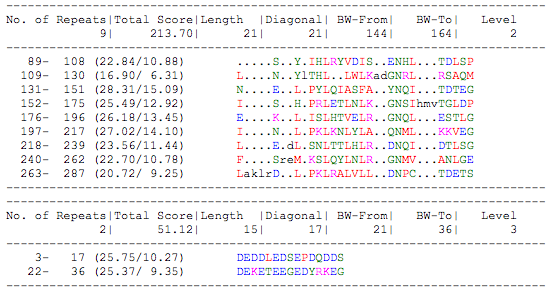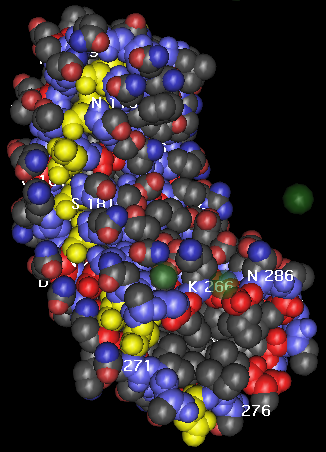| LRRC23 | |||||||||||||||||||||||||||||||||||||||||||||||||||
|---|---|---|---|---|---|---|---|---|---|---|---|---|---|---|---|---|---|---|---|---|---|---|---|---|---|---|---|---|---|---|---|---|---|---|---|---|---|---|---|---|---|---|---|---|---|---|---|---|---|---|---|
| Identifiers | |||||||||||||||||||||||||||||||||||||||||||||||||||
| Aliases | LRRC23, LRPB7, leucine rich repeat containing 23 | ||||||||||||||||||||||||||||||||||||||||||||||||||
| External IDs | MGI: 1315192; HomoloGene: 5082; GeneCards: LRRC23; OMA:LRRC23 - orthologs | ||||||||||||||||||||||||||||||||||||||||||||||||||
| |||||||||||||||||||||||||||||||||||||||||||||||||||
| |||||||||||||||||||||||||||||||||||||||||||||||||||
| |||||||||||||||||||||||||||||||||||||||||||||||||||
| |||||||||||||||||||||||||||||||||||||||||||||||||||
| |||||||||||||||||||||||||||||||||||||||||||||||||||
| Wikidata | |||||||||||||||||||||||||||||||||||||||||||||||||||
| |||||||||||||||||||||||||||||||||||||||||||||||||||
Leucine-rich repeat-containing protein 23 is a protein that in humans is encoded by the LRRC23 gene.
Function
The function of LRRC23 is unknown. It is a member of the leucine-rich repeat family of proteins, which are known for participating in protein-protein interactions. Experimental evidence suggests that LRRC23 interacts with the CD28 protein in a pathway related to the immune system and development of regulatory T cells that control spontaneous autoimmune disease.
Protein sequence
LRRC23 spans 343 residues containing two varieties of internally repeating sequence. Detected and aligned by RADAR, the most abundant repeat is the leucine-rich repeat, repeating 9 times in bases 89-287. The other repeated sequence occurs twice in bases 3-36. The RADAR program output, below, summarizes the composition and location of all the repeats and aligns them for comparison against each other.

The human genome produces three known variants of LRRC23. The largest splice variant, variant 3, contains 8 exons. Variants 1 and 2 use alternative first exons, and variant 2 excludes the seventh exon, giving it a total of seven exons making up the mRNA.
Protein structure
Although the actual structure of LRRC23 is unknown, comparison to the crystal structures of various similar proteins such as 2OMW A (e-value 1.00e-17) reveals a structure typical of other leucine-rich repeat proteins. Alternating beta sheets and coils create a spiraled peptide chain forming an arch shape with beta-sheets occupying the concave surface.
The aligned structure of 2OMW_A with LRRC23 spans acids 72-272 of the LRRC23 protein. Conserved asparagines are highlighted in yellow, showing the regularity of spacing and repeat structure within. This model was generated using Cn3D software provided by NCBI.
References
- ^ GRCh38: Ensembl release 89: ENSG00000010626 – Ensembl, May 2017
- ^ GRCm38: Ensembl release 89: ENSMUSG00000030125 – Ensembl, May 2017
- "Human PubMed Reference:". National Center for Biotechnology Information, U.S. National Library of Medicine.
- "Mouse PubMed Reference:". National Center for Biotechnology Information, U.S. National Library of Medicine.
- Tzachanis D, Berezovskaya A, Nadler LM, Boussiotis VA (Feb 2002). "Blockade of B7/CD28 in mixed lymphocyte reaction cultures results in the generation of alternatively activated macrophages, which suppress T-cell responses". Blood. 99 (4): 1465–73. doi:10.1182/blood.V99.4.1465. PMID 11830501.
- Chang TT, Kuchroo VK, Sharpe AH (Feb 2002). "Role of the B7-CD28/CTLA-4 pathway in autoimmune disease". Signal Transduction Pathways in Autoimmunity. Current Directions in Autoimmunity. Vol. 5. pp. 113–30. doi:10.1159/000060550. ISBN 3-8055-7308-1. PMID 11826754.
- ^ "Entrez Gene: LRRC23 leucine rich repeat containing 23".
- Salomon B, Lenschow DJ, Rhee L, Ashourian N, Singh B, Sharpe A, Bluestone JA (Apr 2000). "B7/CD28 costimulation is essential for the homeostasis of the CD4+CD25+ immunoregulatory T cells that control autoimmune diabetes". Immunity. 12 (4): 431–40. doi:10.1016/S1074-7613(00)80195-8. PMID 10795741.
- RADAR: European Molecular Biology Laboratory - European Bioinformatics Institute (EMBLE-EBI) Radar program:
- NCBI Structure CBlast https://www.ncbi.nlm.nih.gov/Structure/cblast/cblast.cgi?client=entrez&query_gi=206725447&hit=149242643&hsp=1&output=html&pagenum=1&epp=20&sort=evalue&view=graphic&subset=allmmdb
Further reading
- Maruyama K, Sugano S (Jan 1994). "Oligo-capping: a simple method to replace the cap structure of eukaryotic mRNAs with oligoribonucleotides". Gene. 138 (1–2): 171–4. doi:10.1016/0378-1119(94)90802-8. PMID 8125298.
- Ansari-Lari MA, Muzny DM, Lu J, Lu F, Lilley CE, Spanos S, Malley T, Gibbs RA (Apr 1996). "A gene-rich cluster between the CD4 and triosephosphate isomerase genes at human chromosome 12p13". Genome Research. 6 (4): 314–26. doi:10.1101/gr.6.4.314. PMID 8723724.
- Bonaldo MF, Lennon G, Soares MB (Sep 1996). "Normalization and subtraction: two approaches to facilitate gene discovery". Genome Research. 6 (9): 791–806. doi:10.1101/gr.6.9.791. PMID 8889548.
- Ansari-Lari MA, Shen Y, Muzny DM, Lee W, Gibbs RA (Mar 1997). "Large-scale sequencing in human chromosome 12p13: experimental and computational gene structure determination". Genome Research. 7 (3): 268–80. doi:10.1101/gr.7.3.268. PMID 9074930.
- Suzuki Y, Yoshitomo-Nakagawa K, Maruyama K, Suyama A, Sugano S (Oct 1997). "Construction and characterization of a full length-enriched and a 5'-end-enriched cDNA library". Gene. 200 (1–2): 149–56. doi:10.1016/S0378-1119(97)00411-3. PMID 9373149.
- Tasheva ES, An K, Boyle DL, Conrad GW (2006). "Expression and localization of leucine-rich B7 protein in human ocular tissues". Molecular Vision. 11: 452–60. PMID 16030496.
External links
- LRRC23 human gene location in the UCSC Genome Browser.
- LRRC23 human gene details in the UCSC Genome Browser.
This article on a gene on human chromosome 12 is a stub. You can help Misplaced Pages by expanding it. |





